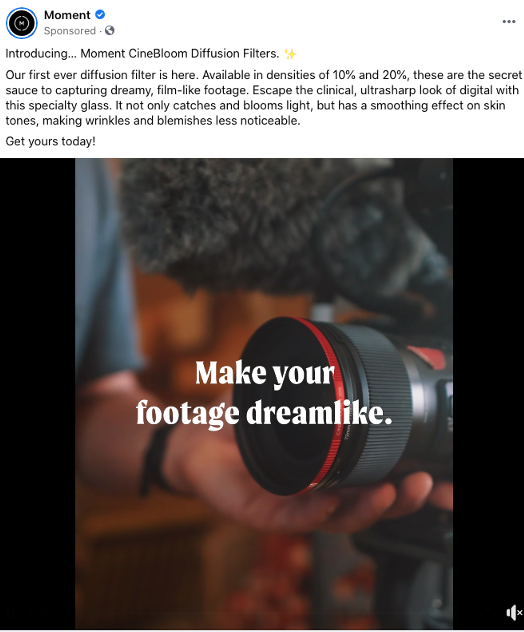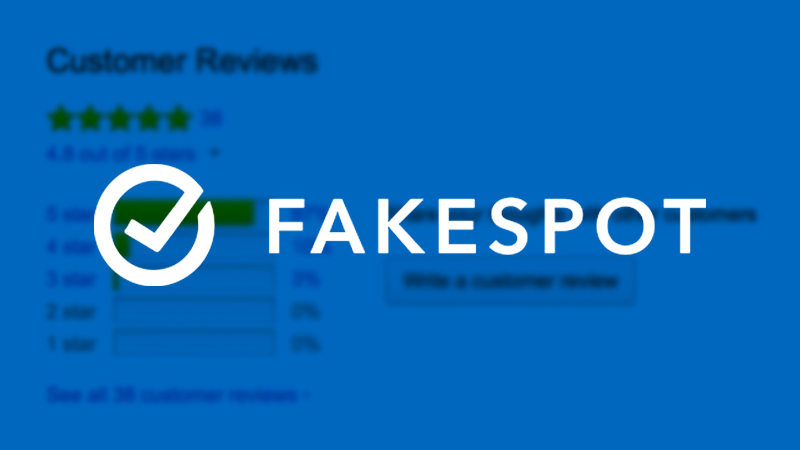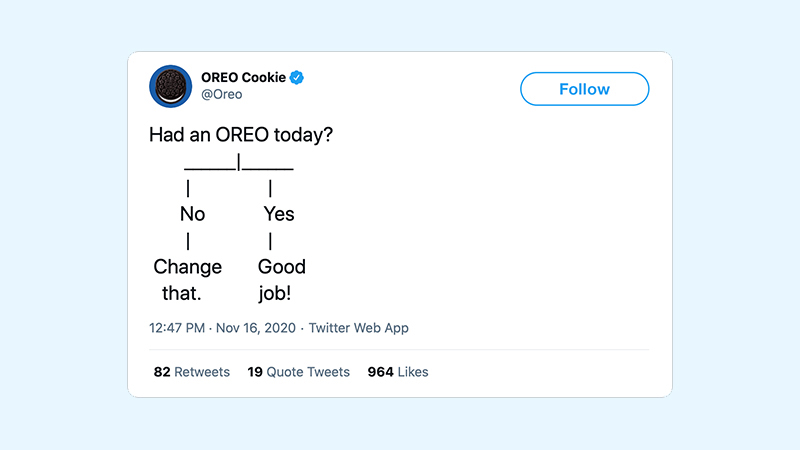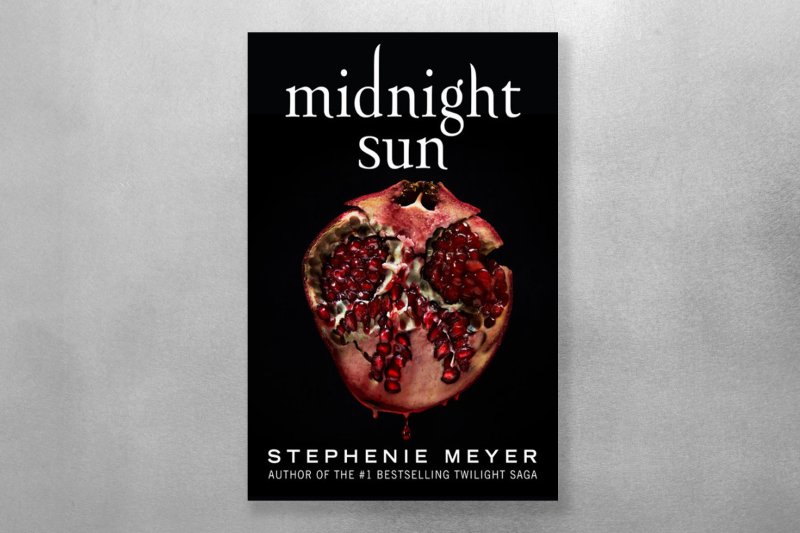7 Examples of Persuasive Content That Inspired Us

We’re all susceptible to the power of persuasion, whether we’re aware of being swayed or not. From articles and advertisements to books and social media, persuasive content and writing are everywhere. Good persuasive content can change people’s minds and leave a lasting impact on an audience, which is at the heart of successful content ideation and marketing.
Persuasive content makes readers see a topic in a different light and even form new opinions. Being authentic, knowledgeable, and creative in your content is key to changing minds. Knowing your audience and finding out what makes them tick is just as important. That means creating audience personas, gathering data, and employing psychology. It also requires looking at the less definable reasons why content can be persuasive. Here are seven examples of content that has persuaded us, and what we’ve learned from having our minds changed.

Moment’s Facebook Ad
Why it worked: Recently, I’ve been searching for new ways to create videos. This ad succeeded in persuading me to click on it. Moment, a marketplace for photographers and filmmakers, knows their audiences’ wants and needs — they even know exactly what type of product could benefit my life. The line, “make your footage dreamlike,” immediately caught my eye. That’s exactly what I want, but how does it work? The copy clearly describes the answer to my question. The video that goes along with this post proves that my footage will look dreamy if I (impulse) buy this lens. This equates to persuasion by demonstration, something our team often uses content and design to achieve. Sometimes “seeing is believing” really is the best way to change someone’s mind.
What I learned: Show don’t tell. Use examples, different media, and case studies to show how whatever you’re selling will change your audience’s life. If they can envision what you’re selling — and see that it works — half the battle is already won. — Jonathan Silverberg, art director

“Why We Should All Care About Mental Illness,” by Ava Ferrigno
Why it works: Most people would agree that mental illness and mental health are important issues. But those who have not personally encountered mental illness in themselves or loved ones might not be confronted with the fact that mental health issues affect them too. This article persuades readers that mental illness impacts everyone, whether they realize it or not. The writer uses statistics, analogies, and relatable examples to demonstrate to readers that mental illness is a global issue and concerns everyone. The writer’s use of facts to back up her views and examples help bridge gaps in thinking. The article caused me to think about the content we create and how persuasion is stronger when there are cold, hard facts to point to. Data is the best persuader because it’s airtight, and it can cause audiences to see issues in a new light — and bring about real change.
What I learned: Back up your statements with data. Equally important is communicating and visualizing your data in a clear and convincing way. It’s hard to argue with proven stats and visible results. If you want to persuade someone, point them to the data. Works every time. — Christiana Nielson, managing editor

This Product Review
Why it worked: When shopping online, I always scroll down to the bottom of the page to check out how people feel about something they’ve purchased, and it can definitely make or break my decision. I’ve been looking into buying a new kind of dog food, and there are a lot of opinions out there. I ended up going with Instinct, partly because this reviewer mentioned that they too did a lot of research and talked with their veterinarian to make their decision. I know sometimes sites can pay for or create fake reviews, so I use fakespot.com to check out how they score on authenticity. For this review, the overall fake spot score was B. Knowing that a brand is transparent enough to let a product speak for itself in the reviews section always scores them points in my book.
What I learned: Show your audience what people really think. If you’re transparent, even bad reviews can work in your favor. Transparency will build more brand loyalty in the long run than false narratives will. — Kylie Valigura, art director

Instagram Influencers
Why it worked: Of course, the clue is in the title: Influencers are meant to influence you. And it works! I spend more time now than ever on my phone surfing my favorite sites and social media. I personally love fashion, home, and travel content. Some of my Instagram favorites are @somewherelately and @theworldwidewebers. They have large, diverse followings but are able to tailor their content to stay relevant and retain their mass appeal. These social media stars can attract, engage, and sell to their followers almost instantly. They spend hours getting to know their audiences by interacting with them through polls and direct messages. They also have to listen and grow continuously to keep reaching a loyal, expanding, and learning audience. That means producing content frequently and being adaptable.
What I learned: Keeping content fresh, innovative, and updated is essential when reaching an ever-growing target in a fast-moving digital world where trends can come and go within hours. While the pace may be heightened for social media influencers, the same rules should apply for any content that brands produce. — Sara Bohne, account supervisor

e.e. cummings
Why it worked: The poet e.e. cummings once said, “To be nobody-but-yourself-in a world which is doing its best, night and day, to make you everybody else means to fight the hardest battle which any human being can fight; and never stop fighting.” I read this in 11th grade, and it had a profound impact on me. I’d heard over and over again since the first days of kindergarten to “be yourself,” but it took me much longer to understand why it was so important or why people were always saying it — or that it wasn’t as easy as it sounds. For some reason, when I read it this way, it finally clicked.
The idea of “being yourself” is as important to brands as it is for individuals. Brands that try to be like everyone else (or worst of all, something they’re not) instead of being themselves, don’t succeed. Even brands that offer identical products or services must make that offer in a genuine, unique way — otherwise, they don’t give people a reason to choose them over a competitor. And brands that aren’t all that they seem will eventually be discovered. People don’t do business with brands they don’t trust.
What I learned: Being yourself builds authenticity, which is essential to brands. That’s why we take the time to build a deep understanding of the brands we work with, as well as their competitive and industry landscape, in order to craft messaging that captures who they are as a brand and speaks authentically to their prospects. I listen to e.e. cummings: Stay true to the identity of the brand, and loyal customers will follow. — Cory Davies, director of client services

OREO’s Twitter
Why it worked: I ate OREOs after reading. OK, this tweet from OREO isn’t exactly traditional persuasive writing, but social media writing is essential to reach, inspire, and connect with audiences. Yes, it’s about cookies. But it’s also a great example of the tactics you should follow when writing persuasive copy for social media. It’s short, simple, and funny. You don’t have to twist my arm, OREO.
What I learned: Persuasive social media is to-the-point and trendy. Twitter is not the place to wax poetic about product features and benefits or service details. Get audiences engaged and on-board with trending joke formats and content that inspires interaction. — Patrick Reardon, managing editor

This Twilight Review
Why it worked: As a preteen, my best friend and I idolized characters like Katniss Everdeen from the Hunger Games series and planned out action-style manga every day during lunch. Naturally, when the Twilight saga rose to popularity, we rolled our eyes at the idea of romance, but “hate-read” the books anyway. More than a decade later, I stumbled across headlines announcing the release of “Midnight Sun,” a new sequel to the series that would be told from the love interest’s perspective. Curious, I looked up some reviews. Raisa Bruner starts hers off with an uncannily relatable personal anecdote, and I was sucked in immediately because it was such a communal experience. Her review actually convinced me to read the novel. It also showed me that sharing personal anecdotes and relating with your audience is an essential part of storytelling.
What I learned: It’s human nature to want to connect, and forming connections is key to being persuasive. Making your audience feel at home will increase their likelihood of buying whatever you’re selling. Tell your brand’s story. Be their friend. After all, friends are the best persuaders. — Michelle Nguyen, fall 2020 editorial intern
Looking for more guidance on the art of persuasion? Sign up for our newsletter to get insights from our team of experts.


